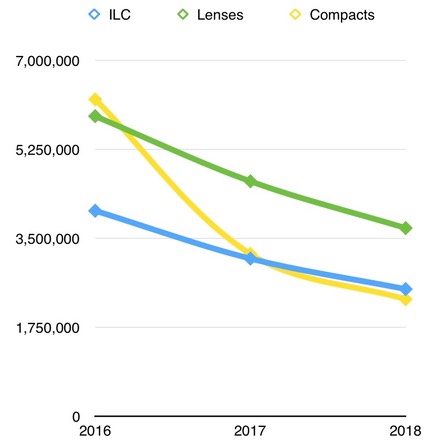Hillsilly said:Sony might have cherry-picked the data, but I also find it interesting that people are discrediting Sony's claims because they are selling higher priced cameras (which has increased their $$ sales volume).
But if I was Nikon or Canon, that would be the most disconcerting thing. Nikon and Canon might still be able to rely on their lower priced cameras, which are often purchased by people as their first step into a better camera system than their phone. But it seems more experienced photographers, when looking to upgrade or add another body, are giving serious consideration to Sony. In an industry where the manufacturers also take pride in being the best (as well as the biggest), hopefully we'll start seeing more innovation from both Canon and Nikon as they fight to retain market share.
I'm sure they wished they started this sooner, but to Canon's credit, they've put a lot of effort into combating this with new EF-S primes and mirrorless offerings. But Nikon seem to be lacking in both.
Actually, during January-February, Sony prices were relatively low with the big sale. So, they probably sold large numbers of cameras to get that dollar figure up.
Nikon is indeed struggling, their FF bodies seem to be selling poorly, at a large sporting event, there is a occasional Nikon shooter, but Canon numbers swamp them. Whats happening here? Nikon is not a bad brand, but they do seem to be less prevalent.
Sony does deserve credit for pushing mirrorless cameras, and moving into mainstream camera production, using industry standard memory cards. I well remember them first trying to push out cameras with floppy disk drives that were unreliable and of such small capacity that image files were compressed to being almost garbage. Then, they decided to replace floppys with another Sony invention - memory sticks, and, once again were panned by mainstream photographers who wanted SD or CF memory which cost far less and were industry standards.
Its too bad that we do not have industry standard batteries. Li-on batteries are dangerous though, so no camera company wants the liability involved with approved batteries made by 100 suppliers. They still get this from counterfeiters and a few third party manufacturers, but the sheer number of different camera batteries holds down the third party suppliers to just a few. For LP-E6 batteries used by many Canon DSLR's, its a exception, lots of people hawking them.
Upvote
0

